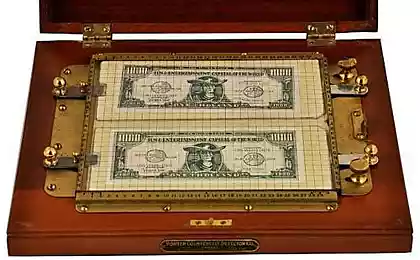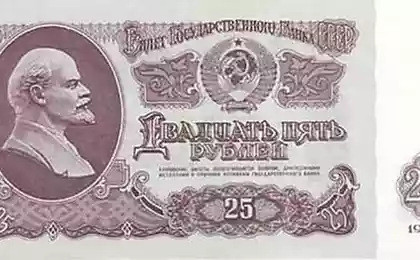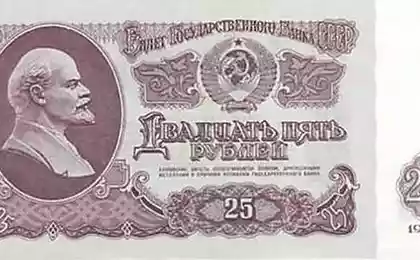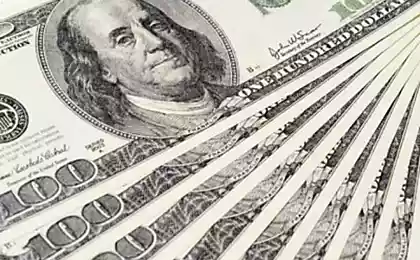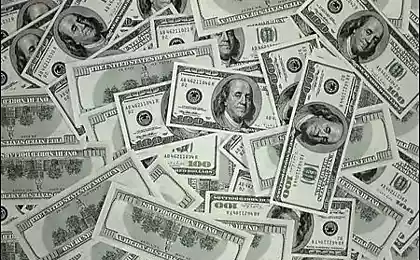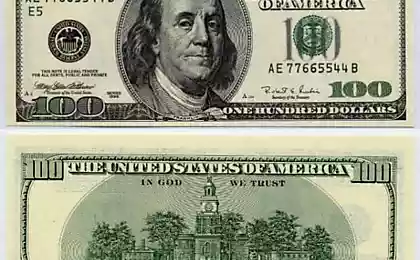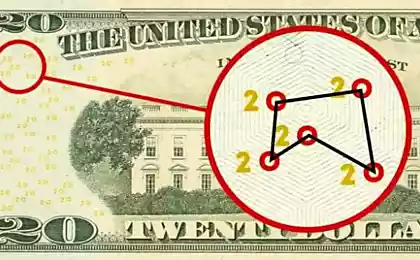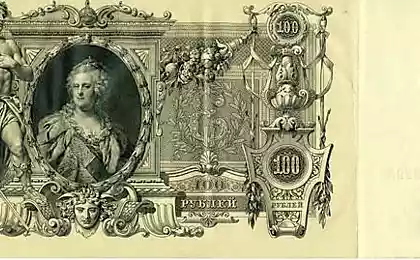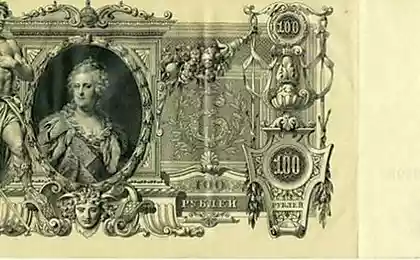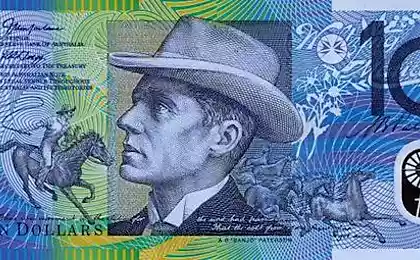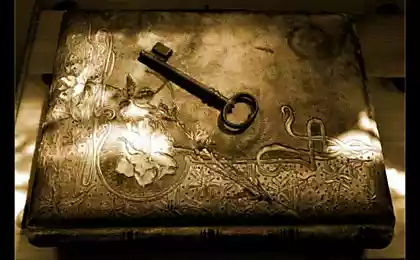770
Riddle two-dollar bills
Try to ask someone from friends traveling in the US, to bring you the $ 2 bill. Most of all, the return they will tell you that yet did not see, or - that such does not exist. Despite the fact that the $ 2 bill is a standard set of notes throughout the history of the United States, to meet her in free circulation is very difficult.
For purely psychological reasons, this bill is, appearing in outstanding immediately withdrawn from it and roamed in wallets of citizens, exported abroad, sold at auction, resold numismatists.
What is the reason? The reason, perhaps - in a number of myths associated with this denomination, "bringing happiness and success».
letter +7 ph via usa-info.com.ua
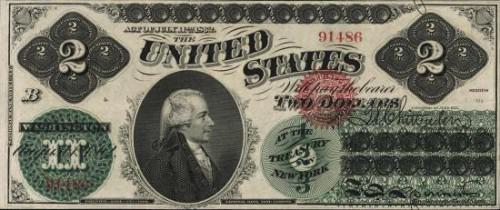
Two-dollar bill, issued in 1976 in honor of the bicentennial of the United States, many collectors are considered rare. Yes, and they do not regard it as such, even if a serious reference book "From the dollar to the yen. Guide to the currencies of the world ", released in 1995 by order of the leading commercial banks, it states that" two-dollar bills ... were produced in small quantities and not all Americans were holding them in their hands. " Denomination is two dollars for America customary - it is used in the circulation of money the United States from time immemorial. This bill is included in the set of notes the first issue, carried out in Philadelphia May 10, 1775 two-dollar bills were issued and then the individual states: Maryland - since 1770, in New York and North Carolina - to 1775, and in Georgia New Hampshire - from 1776, etc. During the 1st Civil War 1861-1865. Many states also let their money, among whom were two-dollar bills.
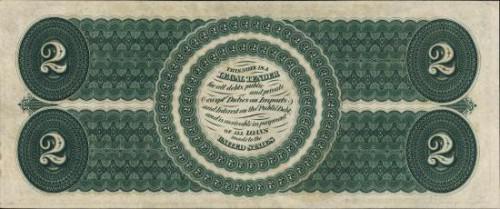
The first two-dollar banknotes were issued by the Federal Government of the United States in 1862. On them was a portrait of the first Secretary of the Treasury Alexander Hamilton. However, in 1869 this was replaced by a portrait of the image of the third US president and author of the Declaration of Independence, Thomas Jefferson. However, the original two-dollar bills are not popular with the banks and the public. There are several explanations for this, the most common of which is that the majority of cash machines was not included Designated banknotes $ 2. Apparently, this explanation makes some sense. For the same reason, for example in Germany not popular banknote 5 marks.
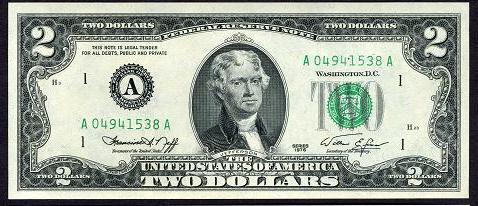
It is believed that two-dollar bill was easily confused with the nominal value of $ 1 bills, but it also entailed some inconvenience. In addition, people widely believed that banknotes $ 2 bring bad luck. All this has led to the low prevalence of banknotes. The situation reached absurd when the sellers refused to accept the two-dollar bills in the stores.
In Russia still are cases of refusal to accept the two-dollar bills exchange offices, citing the fact that there is no duly executed sample ethics bills - especially anniversary series.
The last time the dollar was subjected to severe alteration in 1928 - the sizes of all denominations have been reduced, and their appearance is standardized and with minor changes to these days. Among the bills of this type is also available two-dollar bill.
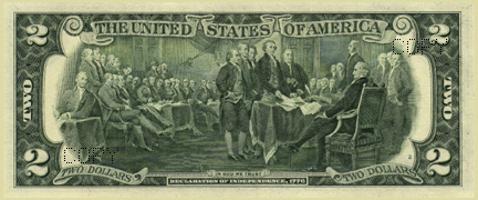
On its obverse Thomas Jefferson (1743-1826) - a prominent statesman and public figure, "father" of the Declaration of Independence, third President of the United States.
On the reverse side of the banknote shows a sample 1928 Jefferson Monticello estate (from the Italian "little mountain"). It was built according to his own design. The house was full of a variety of technical improvements, including those developed by the owner. Here, the "Sage of Monticello" spent his last 17 years, he used to receive many guests, carried on an extensive correspondence - more than a thousand letters a month - with a lot of American and European politicians, scientists and public figures. His library at Monticello had about six and a half thousand volumes and was one of the best in America. It marked the beginning of the Library of Congress. Since 1926 Monticello is a memorial museum, a national shrine USA. It is interesting to note that the portrait of Jefferson and his estate is also depicted on the front and back sides of the US "nickel" - coins of 5 cents.
On considered "rare" two-dollar bill in 1976 also shows Jefferson. On the reverse side as it shows the adoption of the Declaration of Independence. This image is a reproduction of a painting by the famous American artist George. Trumbull "Declaration of Independence" - one of the eight enormous paintings hanging in the Capitol Rotunda. She portrayed a meeting of the Continental Congress July 4, 1776, proclaimed the separation of 13 North American colonies from Great Britain. The painting shows a specific moment when Jefferson with four other members of the committee for the preparation of the Declaration of Independence to transmit the draft declaration of the president of the Continental Congress Hancock for signature (sitting in a chair on the right). The painting depicted were 48 people, fit the bill, only 44 of them. This 36 characters were written by the artist during his lifetime.

Thomas Jefferson at the time of adoption of the Declaration was only 33 years old, so he is depicted in the picture. After this event, he lived (the day!), Even as much as fifty years, was governor of Virginia, Secretary of State, ie Minister of Foreign Affairs, Vice-President, President (in his presence, by the way, in the 1808- 1809 established diplomatic relations with Russia). On the front side of the two-dollar bills he is depicted as a mature statesman, obviously, the period of his presidency (the portraits of 10 of the 12 US banknotes of various denominations are portraits of presidents).
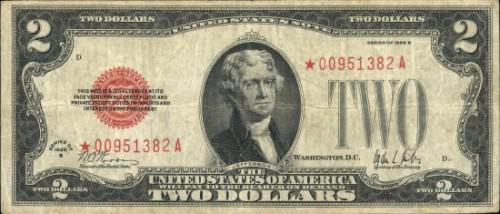
Two-dollar bill in 1976 was printed in millions of copies. But, obviously, this bill merits of something that is not satisfied with the population of the United States. Running is the most one-dollar bills, which is 47% of the total amount of all outstanding bills. Its average "life expectancy" - only one and a half years, during which time it turns out crisp bills in the crumpled and torn paper, which must be replaced. And every day after New York Federal Bank destroys worn dollar bills worth more than 35 million dollars! A huge stock of unclaimed "rare" two-dollar bills in 1976 is useless in the Treasury. It is obvious that these bills are not involved in the treatment, do not wear out, and, accordingly, does not need to be replaced.
There are a number of legends onositelno bill "the dollar." In accordance with one of them, if we have this bill in your wallet, the money will not be transferred to him. Another legend has some sexual context. But the numismatists have for this bill has a professional interest. After all that hard to find in circulation, always attracts the attention of numismatists.
Another legend has some sexual context.
During the Vietnam War, the Vietnamese prostitute services usually cost $ 2.
When attempts were made to pay the 5th, the date usually are.
As a result, $ 2, and have become a symbol of quality and cheap sex.
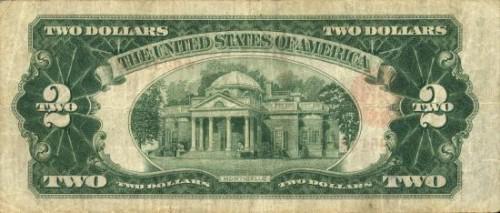
Source:
For purely psychological reasons, this bill is, appearing in outstanding immediately withdrawn from it and roamed in wallets of citizens, exported abroad, sold at auction, resold numismatists.
What is the reason? The reason, perhaps - in a number of myths associated with this denomination, "bringing happiness and success».
letter +7 ph via usa-info.com.ua

Two-dollar bill, issued in 1976 in honor of the bicentennial of the United States, many collectors are considered rare. Yes, and they do not regard it as such, even if a serious reference book "From the dollar to the yen. Guide to the currencies of the world ", released in 1995 by order of the leading commercial banks, it states that" two-dollar bills ... were produced in small quantities and not all Americans were holding them in their hands. " Denomination is two dollars for America customary - it is used in the circulation of money the United States from time immemorial. This bill is included in the set of notes the first issue, carried out in Philadelphia May 10, 1775 two-dollar bills were issued and then the individual states: Maryland - since 1770, in New York and North Carolina - to 1775, and in Georgia New Hampshire - from 1776, etc. During the 1st Civil War 1861-1865. Many states also let their money, among whom were two-dollar bills.

The first two-dollar banknotes were issued by the Federal Government of the United States in 1862. On them was a portrait of the first Secretary of the Treasury Alexander Hamilton. However, in 1869 this was replaced by a portrait of the image of the third US president and author of the Declaration of Independence, Thomas Jefferson. However, the original two-dollar bills are not popular with the banks and the public. There are several explanations for this, the most common of which is that the majority of cash machines was not included Designated banknotes $ 2. Apparently, this explanation makes some sense. For the same reason, for example in Germany not popular banknote 5 marks.

It is believed that two-dollar bill was easily confused with the nominal value of $ 1 bills, but it also entailed some inconvenience. In addition, people widely believed that banknotes $ 2 bring bad luck. All this has led to the low prevalence of banknotes. The situation reached absurd when the sellers refused to accept the two-dollar bills in the stores.
In Russia still are cases of refusal to accept the two-dollar bills exchange offices, citing the fact that there is no duly executed sample ethics bills - especially anniversary series.
The last time the dollar was subjected to severe alteration in 1928 - the sizes of all denominations have been reduced, and their appearance is standardized and with minor changes to these days. Among the bills of this type is also available two-dollar bill.

On its obverse Thomas Jefferson (1743-1826) - a prominent statesman and public figure, "father" of the Declaration of Independence, third President of the United States.
On the reverse side of the banknote shows a sample 1928 Jefferson Monticello estate (from the Italian "little mountain"). It was built according to his own design. The house was full of a variety of technical improvements, including those developed by the owner. Here, the "Sage of Monticello" spent his last 17 years, he used to receive many guests, carried on an extensive correspondence - more than a thousand letters a month - with a lot of American and European politicians, scientists and public figures. His library at Monticello had about six and a half thousand volumes and was one of the best in America. It marked the beginning of the Library of Congress. Since 1926 Monticello is a memorial museum, a national shrine USA. It is interesting to note that the portrait of Jefferson and his estate is also depicted on the front and back sides of the US "nickel" - coins of 5 cents.
On considered "rare" two-dollar bill in 1976 also shows Jefferson. On the reverse side as it shows the adoption of the Declaration of Independence. This image is a reproduction of a painting by the famous American artist George. Trumbull "Declaration of Independence" - one of the eight enormous paintings hanging in the Capitol Rotunda. She portrayed a meeting of the Continental Congress July 4, 1776, proclaimed the separation of 13 North American colonies from Great Britain. The painting shows a specific moment when Jefferson with four other members of the committee for the preparation of the Declaration of Independence to transmit the draft declaration of the president of the Continental Congress Hancock for signature (sitting in a chair on the right). The painting depicted were 48 people, fit the bill, only 44 of them. This 36 characters were written by the artist during his lifetime.

Thomas Jefferson at the time of adoption of the Declaration was only 33 years old, so he is depicted in the picture. After this event, he lived (the day!), Even as much as fifty years, was governor of Virginia, Secretary of State, ie Minister of Foreign Affairs, Vice-President, President (in his presence, by the way, in the 1808- 1809 established diplomatic relations with Russia). On the front side of the two-dollar bills he is depicted as a mature statesman, obviously, the period of his presidency (the portraits of 10 of the 12 US banknotes of various denominations are portraits of presidents).

Two-dollar bill in 1976 was printed in millions of copies. But, obviously, this bill merits of something that is not satisfied with the population of the United States. Running is the most one-dollar bills, which is 47% of the total amount of all outstanding bills. Its average "life expectancy" - only one and a half years, during which time it turns out crisp bills in the crumpled and torn paper, which must be replaced. And every day after New York Federal Bank destroys worn dollar bills worth more than 35 million dollars! A huge stock of unclaimed "rare" two-dollar bills in 1976 is useless in the Treasury. It is obvious that these bills are not involved in the treatment, do not wear out, and, accordingly, does not need to be replaced.
There are a number of legends onositelno bill "the dollar." In accordance with one of them, if we have this bill in your wallet, the money will not be transferred to him. Another legend has some sexual context. But the numismatists have for this bill has a professional interest. After all that hard to find in circulation, always attracts the attention of numismatists.
Another legend has some sexual context.
During the Vietnam War, the Vietnamese prostitute services usually cost $ 2.
When attempts were made to pay the 5th, the date usually are.
As a result, $ 2, and have become a symbol of quality and cheap sex.

Source:


